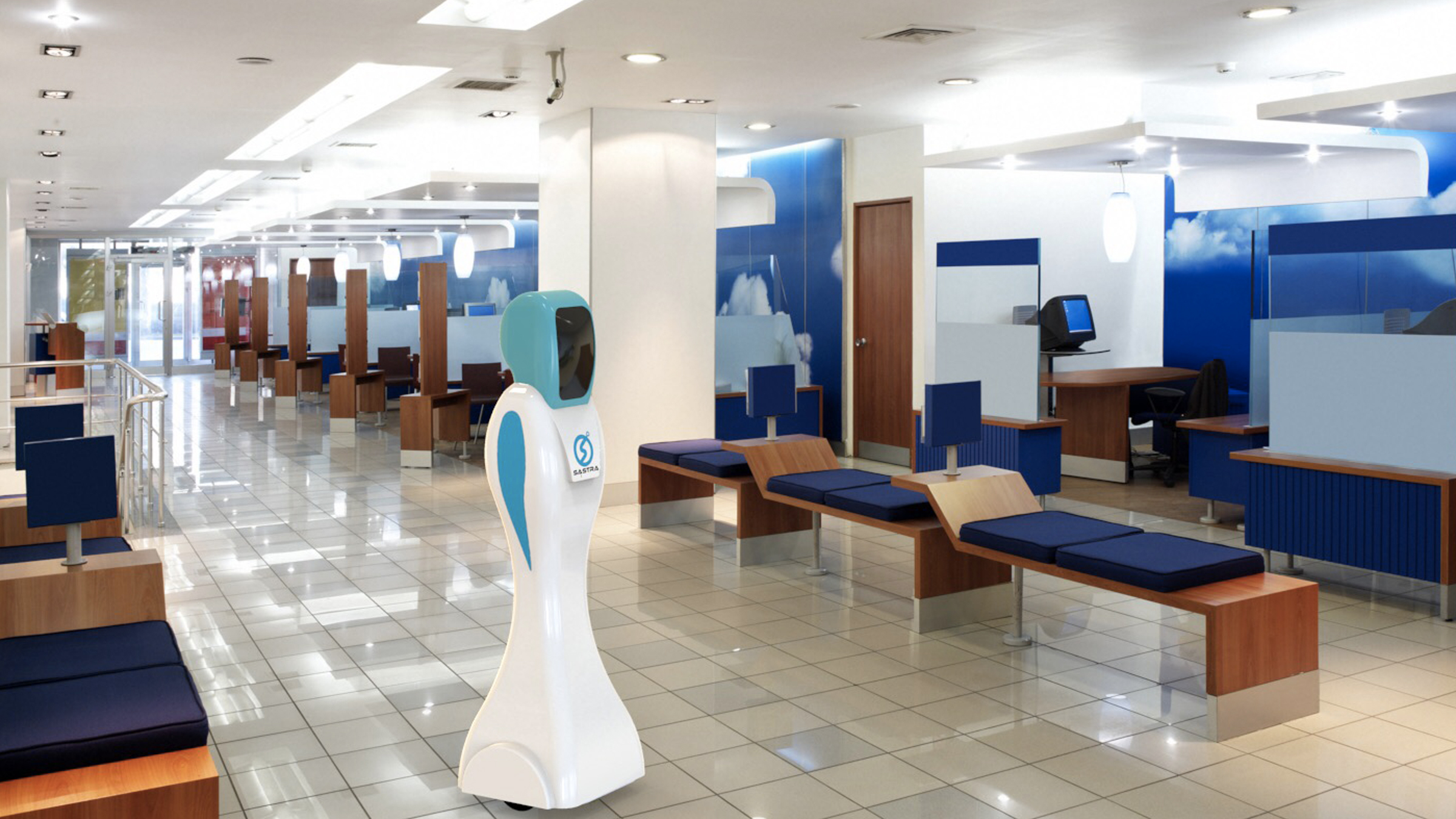Imagine if we could all work from home in our pajamas. No more scraping ice off our cars in winter. No more rush-hour traffic. And no more boring cubicles and vending machine lunches.
While robots are going to replace many jobs in the future, embracing this technology will also mean better work/life balance and increased job satisfaction. That’s because telepresence robots will be able to go to work for us, meaning no more soul-crushing commutes to the office.
Read on to learn how it will work.
What are Telepresence Robots?
They’re wheeled remote-controlled devices with wireless internet connectivity. If you’ve ever seen that episode of Modern Family American Skyper where Phil attended his daughter’s graduation via a wheeled robot, you’ve already seen how they can be used.
The best way to describe a telepresence robot is a Segway with an iPad on top. However, many companies have improved upon this design, creating easy-to-use devices with a streamlined look. Users can maneuver the robot remotely, video chatting with people via the inbuilt app.
The reason this solution is so popular? The physical presence allows you to move around your office. That means you can be eating lunch with coworkers, attending meetings and basically interacting with your surroundings as if you were there in person.
These robots are incredibly easy to set up. And while the driving may take some practice to master, the technology may revolutionize how we work in the future.
Will Telepresence Robots Go to Work for Us?
Yes. And they already are.
Consider how much the modern workspace has changed in the last 20 years. We’ve gone from static whiteboards to “smartboards” connected to the internet.
We’ve upgraded from sitting desks to standing and even walking desks.
And hardwired phones have largely been replaced by instant messaging, emailing, and video conferencing.
Working remotely has many benefits and gives us much more flexibility. It means that we don’t need to uproot our lives for that dream job or commute huge distances into the office. It means more time spent with the family, working in the comfort of your own home, and fewer interruptions throughout the day.
But when you’re not present in the office, it’s easy to feel like you’re missing out. Even though there are plenty of ways to stay connected online, you’re likely to quickly find yourself missing that basic interaction with colleagues.
The solution? Telepresence robots. These robots provide us with the best of both worlds. Keep reading to learn how.
How Telepresence Robots Will Change the Way We Work
One of the concerns is that telepresence solutions will further decrease how much we’re communicating in person. Sure, there’s no replacement for true, face-to-face communication. But this technology can help us establish better relationships with coworkers, employees, clients, and partners.
When you can see the person you’re speaking with, you naturally build up more of a rapport than if you were just emailing back and forth.
Not only does it mean that you can still hang out with coworkers, but there are huge implications for workplace productivity too. While it would be nice to think that all important conversations happen within meetings, this isn’t the case. Often, the biggest ideas happen during conversations after the meeting, on the way out the door or by the water cooler.
Telepresence robots give you all of the benefits of working at home while allowing you to move around and join in conversations.
Businesses can also expect to save a lot of money through the use of this technology. As the cost of business travel continues to eat into profits, businesses could save hundreds of thousands of dollars on flights, car rentals, taxis, and hotel fees every year.
Telepresence Robots and Education
While telepresence robots are destined to change the way we all work, does that mean no more sick days? There are also a wide variety of other applications for this technology. One of the best examples is 10-year-old Peyton Walton, who is currently receiving treatments at Memorial Sloan Kettering Cancer Centre.
Peyton is using a telepresence robot named “PAVS” or “Peyton’s Awesome Virtual Self. It allows her to attend class, participate in discussions, and hang out with her friends, all while undergoing chemotherapy.
Around 1 in every 285 children in the United States will be diagnosed with cancer before they turn 20. And each year, more than 300,000 kids are diagnosed around the world.
Many of these students miss months of class as they travel to hospitals or are too sick to attend school.
Now, telepresence robots are helping students attend school when they wouldn’t otherwise be able to. This means they can keep some normalcy while they’re being treated. They can also enjoy the support of their friends and will be able to keep up with their school work, reducing the chances that they’ll be left behind.
This technology is also being used by teachers. This is especially important for rural areas when certain subjects can’t be taught at some schools. Experts can also now be bought into schools and can address each student individually while looking around and engaging with the whole class.
And it’s not just elementary schools that are benefiting. Some universities are now using hybrid learning. This means that students can collaborate both remotely and in person.
Oral Robers University is even offering international students the ability to enroll in the school without a visa. The school is aiming to open its campus to the whole world.
Just like smartphones and video conferencing impacted the way we communicate, telepresence robots are going to fundamentally change the way we work and learn. These robots increase engagement, encourage collaboration, improve our ability to innovate, and best of all, we can do it all from the comfort of our couches.
If you’d like to learn more, get in touch today. We’d love to have a conversation about how this groundbreaking technology can increase work/life balance for employees while saving your business money.


